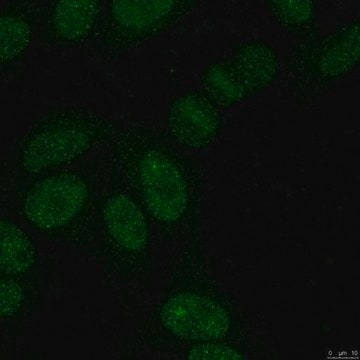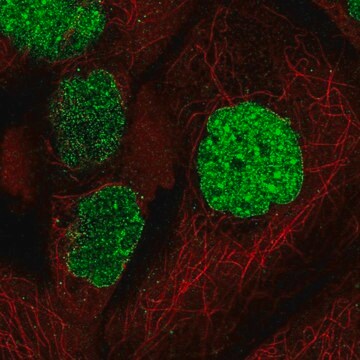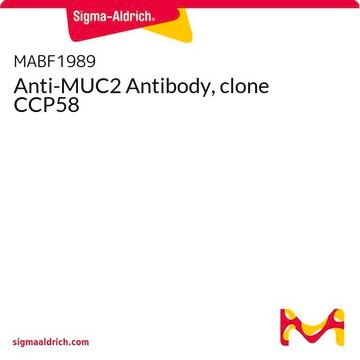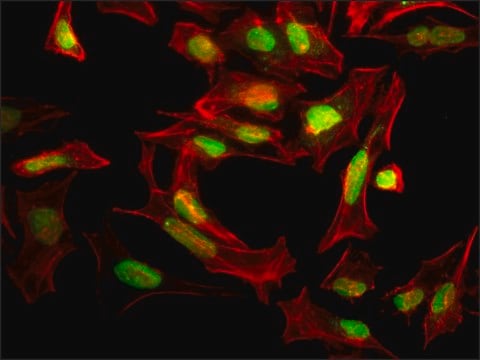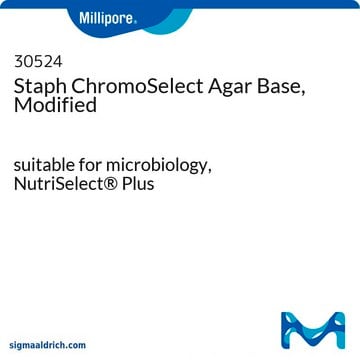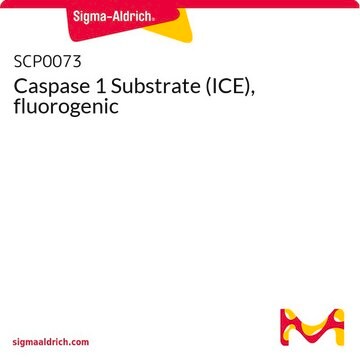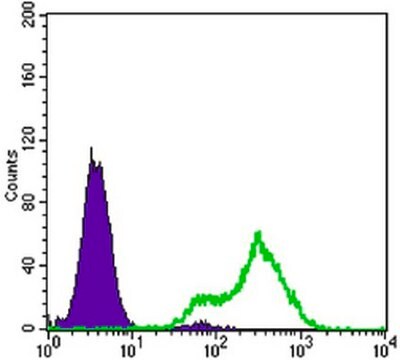07-2167
Anti-SUMO 2/3 Antibody
from rabbit, purified by affinity chromatography
Synonym(e):
SMT3 suppressor of mif two 3 homolog 2 (S. cerevisiae), Ubiquitin-like protein SMT3B, SMT3 homolog 2, SMT3 (suppressor of mif two 3, yeast) homolog 2, SMT3 suppressor of mif two 3 homolog 2 (yeast), small ubiquitin-related modifier 2, small ubiquitin-lik
About This Item
Empfohlene Produkte
Biologische Quelle
rabbit
Qualitätsniveau
Antikörper-Produkttyp
primary antibodies
Klon
polyclonal
Aufgereinigt durch
affinity chromatography
Speziesreaktivität
pig, human, mouse, rat
Speziesreaktivität (Voraussage durch Homologie)
bovine (based on 100% sequence homology), porcine (based on 100% sequence homology), rhesus macaque (based on 100% sequence homology), opossum (based on 100% sequence homology), chimpanzee (based on 100% sequence homology)
Methode(n)
immunoprecipitation (IP): suitable
western blot: suitable
UniProt-Hinterlegungsnummer
Versandbedingung
wet ice
Posttranslationale Modifikation Target
unmodified
Angaben zum Gen
human ... SUMO2(6613)
mouse ... Sumo2(170930)
opossum ... Sumo2(123244757)
rat ... Sumo2(690244)
Allgemeine Beschreibung
Spezifität
Immunogen
Anwendung
Zelluläre Signaltransduktion
Ubiquitin & Ubiquitin-Stoffwechsel
Immunoprecipitation Analysis: A previous was used by an independent laboratory in IP. (Li, T., et al. (2006). The Journal of Biological Chemistry. 281(47):36221-36227.)
Qualität
Western Blot Analysis: 1 µg/mL of this antibody detected SUMO 2/3 on 10 µg of HeLa nuclear extract.
Zielbeschreibung
Physikalische Form
Lagerung und Haltbarkeit
Hinweis zur Analyse
HeLa nuclear extract
Sonstige Hinweise
Haftungsausschluss
Not finding the right product?
Try our Produkt-Auswahlhilfe.
Lagerklassenschlüssel
12 - Non Combustible Liquids
WGK
WGK 1
Flammpunkt (°F)
Not applicable
Flammpunkt (°C)
Not applicable
Analysenzertifikate (COA)
Suchen Sie nach Analysenzertifikate (COA), indem Sie die Lot-/Chargennummer des Produkts eingeben. Lot- und Chargennummern sind auf dem Produktetikett hinter den Wörtern ‘Lot’ oder ‘Batch’ (Lot oder Charge) zu finden.
Besitzen Sie dieses Produkt bereits?
In der Dokumentenbibliothek finden Sie die Dokumentation zu den Produkten, die Sie kürzlich erworben haben.
Unser Team von Wissenschaftlern verfügt über Erfahrung in allen Forschungsbereichen einschließlich Life Science, Materialwissenschaften, chemischer Synthese, Chromatographie, Analytik und vielen mehr..
Setzen Sie sich mit dem technischen Dienst in Verbindung.